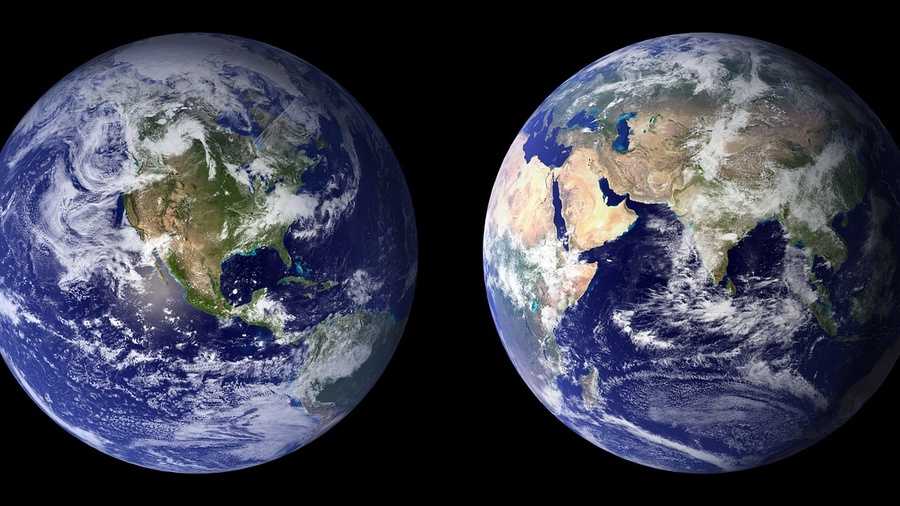Truth & Goodness
Fact or Fiction? 5 Techniques to Spot Manipulation Instantly
13 December 2025

The evolution of life began with its emergence on Earth, which happened around 3.5 to 4 billion years ago. During this process, organisms gradually diversified and transformed into increasingly complex forms. So why did this development nearly stall at one point?
This period, known as the “Boring Billion,” lasted from about 1.8 billion to 800 million years ago. During this time, the evolution of life clearly slowed down—despite seemingly favorable conditions, an explosion of species diversity did not occur. Therefore, what caused this mysterious deceleration?
Researchers looked for answers in geological records and fossils. Scientists from Virginia Tech traced evolution during this period, publishing their analysis results in a study that caught the attention of the prestigious journal Science.
The researchers focused on analyzing the fossils of marine single-celled organisms. Through this, they created a kind of “snapshot” of evolution on Earth. The first multicellular organisms appeared around 1.8 billion years ago, but their diversity remained stable—until it suddenly collapsed. Scientists concluded that environmental conditions were the cause of this stagnation. The oxygen level in the atmosphere and oceans was low but stable, which limited the development of more complex life forms.
However, researchers also wondered why the evolution of life accelerated so rapidly in later epochs. The answer, once again, lay in the ice. Around 635–720 million years ago, a great glaciation occurred, completely transforming Earth’s climate. As a result, thousands of species and ecosystems vanished under the ice. When the ice began to melt, it caused a catastrophe for species, which paradoxically created space for new life forms.
One of the key factors in this process was the rise in atmospheric oxygen levels. It was then that more complex organisms, including multicellular organisms, appeared. Scientists believe that ice ages act as catalysts for evolution, opening the way for new biological solutions.
You might like to read: “Once-in-a-Century” Crop Failures May Strike Every Decade
These discoveries raise fundamental questions about what drives great evolutionary changes. Why did eukaryotes develop so slowly throughout the “Boring Billion”? What caused life to explode with diversity after the ice age? Answers to these questions can indicate directions for further research into the history of evolution of life on Earth.
These studies also reveal how closely geology and biology are interconnected—like two gears in one machine. They indicate that major climatic events can alter the course of evolution, triggering both extinctions and the emergence of new species. Ultimately, these analyses help us understand the forces that have been shaping life for billions of years.

The low level of oxygen in the atmosphere and oceans was one of the main limitations on the evolution of life. Although oxygen is crucial for most organisms today, it remained scarce for a long time. After the Great Oxygenation Event, which happened around 2.4 billion years ago, oxygen levels rose, but they were still too low to support the development of more complex life forms.
We can compare this limitation to trying to start a bonfire with damp wood—the potential existed, but the conditions were unfavorable. At that time, simple bacteria and archaea dominated Earth, developing various ways to obtain energy, such as fermentation or anaerobic respiration.
Larger multicellular organisms, like plants or animals, need higher oxygen levels to function effectively. This is because aerobic respiration provides significantly more energy than anaerobic processes, which enables the development of more complicated biological structures and processes. Without adequate oxygen, eukaryotes could not have evolved toward more advanced life forms.
Worth reading: Mammoth bones in Mexico. DNA rewrites prehistory
Studies of the “Boring Billion” help us understand how the evolution of life might proceed on other planets. The process of oxygen accumulation in the atmosphere, similar to what happened on Earth, could be occurring on Mars or exoplanets. Analyzing this period provides clues about how to search for conditions conducive to life in space. Perhaps somewhere deep in the universe, another planet is currently undergoing its “Boring Billion,” waiting for an explosion of biological diversity.
Read this article in Polish: Ewolucja życia na Ziemi. Tak „nudny miliard” zmienił świat